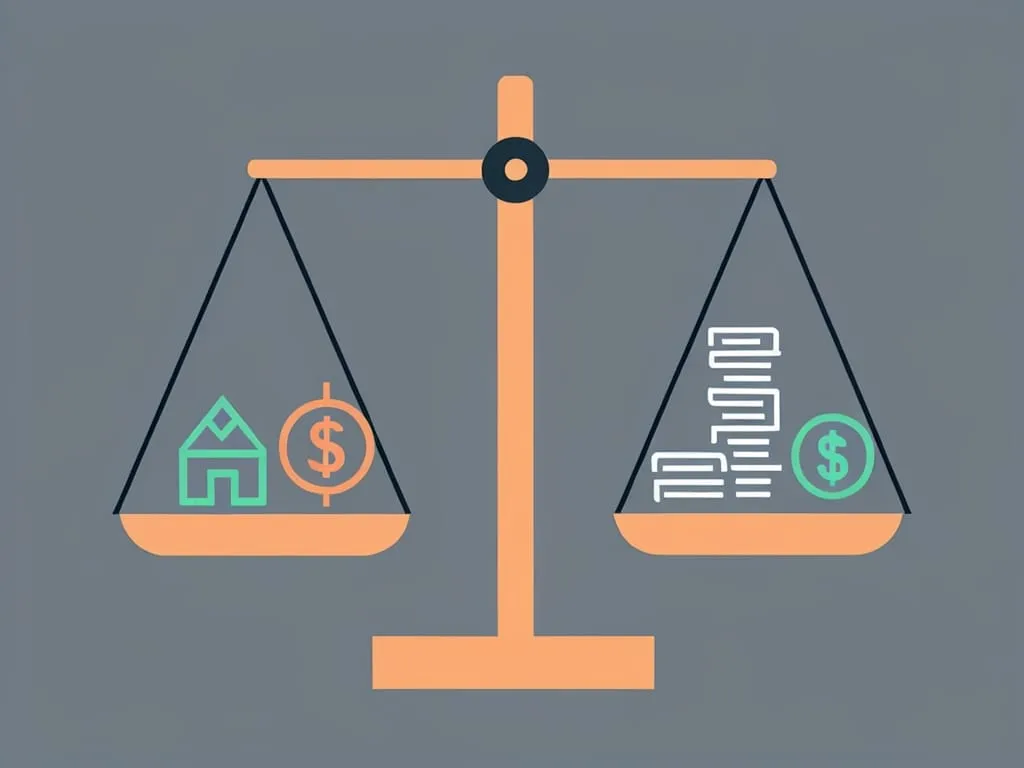When it comes to building an investment portfolio, the landscape can be overwhelming, especially for those new to the world of finance. However, with the right guidance, you can navigate this complex terrain with confidence. Here’s a deep dive into the principles of creating a balanced and efficient portfolio, a journey that will help you make informed decisions and avoid common pitfalls.
Understanding Risk and Return
At the heart of any investment strategy is the delicate balance between risk and return. It's a fundamental principle that experienced investors understand well: the higher the risk, the higher the potential return, but also the greater the potential loss. This isn't just a theoretical concept; it's a hard reality that every investor must confront.
For instance, if you're looking for safe and stable returns, you might opt for government bonds or savings accounts. However, these safe havens typically offer lower returns. On the other hand, investing in stocks can provide higher returns, but it comes with a higher risk of volatility and potential losses. The key is to find a balance that aligns with your risk tolerance and financial goals.
The Danger of False Promises
One of the easiest ways to spot investment fraud is when someone promises you high returns with minimal risk. This is a red flag because, in the world of investing, such promises are simply unrealistic. No legitimate investment can guarantee high returns without some level of risk involved.
Diversification: The Key to Risk Management
Diversification is a cornerstone of portfolio management. It involves spreading your investments across different asset classes to reduce risk. There are two types of risk to consider: systematic risk, which cannot be diversified away (such as market risk), and nonsystematic risk, which can be mitigated through diversification.
For example, if you invest solely in stocks, you're exposing yourself to significant market risk. However, by adding bonds, real estate investment trusts (REITs), and precious metals to your portfolio, you can reduce this risk. Each of these assets behaves differently under various market conditions, so when one asset class is performing poorly, others might be doing well, thereby stabilizing your overall portfolio.
The Importance of Rebalancing
Rebalancing your portfolio is crucial for maintaining your desired asset allocation. It involves periodically reviewing your portfolio and adjusting it to ensure that it remains aligned with your investment goals. This process forces you to buy low and sell high, which can actually increase your returns over the long term.
Imagine you have a portfolio split between stocks and bonds. If the stock market surges, your stock holdings might become a larger portion of your portfolio than you intended. Rebalancing would involve selling some of the stocks and buying more bonds to restore the original balance. This discipline helps you avoid the emotional pitfalls of investing, such as selling during market downturns or buying during market highs.
Dynamic vs. Fixed Asset Allocation
While fixed asset allocation is a solid strategy, some investors consider dynamic asset allocation, which involves adjusting your portfolio based on changing market conditions. However, this approach is not for everyone. It requires a deep understanding of market dynamics and the discipline to make adjustments without being swayed by emotions.
For instance, if stocks become overvalued, it might be wise to reduce your equity allocation slightly. Conversely, if stocks are undervalued, you might increase your equity allocation. However, these adjustments should be minor and based on sound valuation metrics rather than emotional reactions to market fluctuations.
Constructing Your Portfolio
Building a portfolio is not a one-size-fits-all affair. It depends on your risk tolerance, investment horizon, and personal financial goals. Here are a few steps to consider:
- Determine Your Asset Classes: Decide how many different asset classes you want to include in your portfolio. This could range from simple portfolios with just a few classes (like large-cap US stocks, foreign stocks, and short-term bonds) to more complex portfolios that include small-cap stocks, emerging markets, REITs, and precious metals.
- Assess Your Risk Tolerance: How much risk are you willing to take? This will help you decide the proportion of each asset class in your portfolio.
- Consider Complexity: More complex portfolios can offer better diversification but also come with higher tracking errors compared to simpler portfolios. You need to balance the benefits of diversification against the complexity and potential costs of managing a more intricate portfolio.
Market Efficiency and Active Management
The concept of market efficiency suggests that financial markets are generally efficient, meaning that prices reflect all available information. This makes it difficult for active managers to consistently outperform the market. In fact, most active managers fail to beat the market over the long term.
Index funds, which track a particular market index like the S&P 500, are often recommended as a more rational and cost-effective way to invest. They offer broad diversification and lower fees compared to actively managed funds.
Implementing Your Strategy
Once you've decided on your asset allocation, it's time to implement your strategy. This involves choosing the right investment vehicles, such as mutual funds, exchange-traded funds (ETFs), or individual stocks and bonds.
For example, if you decide to include international stocks in your portfolio, you might choose an ETF that tracks a global stock market index. Similarly, for bonds, you could opt for a mutual fund that invests in a mix of government and corporate bonds.
Managing Assets in Taxable and Tax-Sheltered Accounts
Tax implications can significantly impact your investment returns. It's important to manage your assets in both taxable and tax-sheltered accounts efficiently. For instance, tax-efficient investments like index funds should be held in taxable accounts, while tax-inefficient investments like bonds or actively managed funds should be held in tax-deferred accounts like 401(k)s or IRAs.
The Role of Emotional Discipline
Investing is as much about emotional discipline as it is about financial acumen. It's easy to get caught up in the excitement of a bull market or the fear of a bear market. However, successful investors are those who stick to their strategy through thick and thin.
For example, during the dot-com bubble, many investors got swept up in the hype and invested heavily in tech stocks, only to suffer significant losses when the bubble burst. Similarly, during market downturns, it's tempting to sell your stocks and move to safer assets. But this is often the worst time to do so, as you're selling low and potentially missing out on future gains.
Conclusion
Building an intelligent portfolio is not just about picking the right investments; it's about understanding the underlying principles of risk and return, diversification, and rebalancing. It's about having the emotional discipline to stick to your strategy and avoid the pitfalls of market timing and emotional decision-making.
Whether you're a novice investor or a seasoned pro, the key to success lies in creating a balanced and efficient portfolio that aligns with your unique financial goals and risk tolerance. By following these principles, you can navigate the complex world of finance with confidence and achieve your long-term financial objectives.






